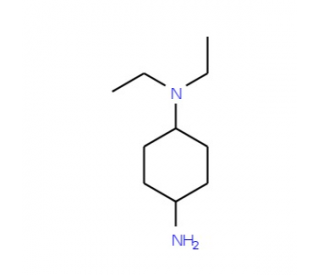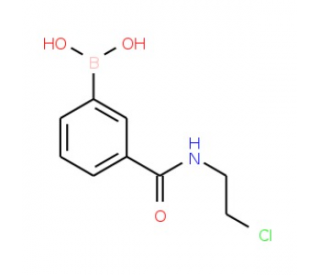详细说明
Purity
>95%, by SDS-PAGE under reducing conditions and visualized by silver stain
Endotoxin Level
<0.01 EU per 1 μg of the protein by the LAL method.
Activity
Measured by its binding ability in a functional ELISA. When Recombinant Human VEGF R1/Flt‑1 Fc Chimera, aa 27-328 (Catalog # ) is immobilized at 2 μg/mL, 100 μL/well, the concentration of Recombinant Human PlGF-3 that produces 50% of the optimal binding response is approximately 0.6‑3 ng/mL.
Source
Spodoptera frugiperda, Sf 21 (baculovirus)-derived Leu19-Arg221
Accession #
N-terminal Sequence
AnalysisLeu19
Structure / Form
Disulfide-linked homodimer
Predicted Molecular Mass
22.8 kDa (monomer)
SDS-PAGE
29 kDa, reducing conditions
Carrier Free
What does CF mean?
CF stands for Carrier Free (CF). We typically add Bovine Serum Albumin (BSA) as a carrier protein to our recombinant proteins. Adding a carrier protein enhances protein stability, increases shelf-life, and allows the recombinant protein to be stored at a more dilute concentration. The carrier free version does not contain BSA.
What formulation is right for me?
In general, we advise purchasing the recombinant protein with BSA for use in cell or tissue culture, or as an ELISA standard. In contrast, the carrier free protein is recommended for applications, in which the presence of BSA could interfere.
7758-PL/CF |
| 7758-PL |
Formulation Lyophilized from a 0.2 μm filtered solution in HCl. | Formulation Lyophilized from a 0.2 μm filtered solution in HCl with BSA as a carrier protein. | |
Reconstitution Reconstitute at 100 μg/mL in 4 mM HCl. | Reconstitution Reconstitute at 100 μg/mL in 4 mM HCl containing at least 0.1% human or bovine serum albumin. | |
Shipping The product is shipped at ambient temperature. Upon receipt, store it immediately at the temperature recommended below. | Shipping The product is shipped at ambient temperature. Upon receipt, store it immediately at the temperature recommended below. | |
Stability & Storage: Use a manual defrost freezer and avoid repeated freeze-thaw cycles.
| Stability & Storage: Use a manual defrost freezer and avoid repeated freeze-thaw cycles.
|
Background: PlGF-3
Placenta growth factor (PlGF or PGF) is a member of the PDGF/VEGF family of growth factors that share a conserved pattern of eight cysteines (1‑3). Alternative splicing likely results in four human mature PlGF forms containing 131 (PlGF‑1), 152 (PlGF‑2), 203 (PlGF‑3), or 224 (PlGF-4) amino acids (aa) (1-3). The PlGF-3 form is limited to humans. PlGF-3 and PlGF-1 do not contain a heparin binding insert at the C‑terminus (1, 2). Within the region shared with other PlGF isoforms (aa 18-131), human PlGF‑3 shares 68%, 66%, 96%, 96%, 87% and 77% aa sequence identity with mouse, rat, porcine, equine, canine and bovine PlGF, respectively. PlGF is mainly found as a variably glycosylated, secreted, 55 ‑ 60 kDa, disulfide linked homodimer (1, 4). Mammalian cells expressing all forms of PlGF include villous trophoblasts and decidual cells, with smaller amounts in erythroblasts, keratinocytes and some endothelial cells (1-3, 5, 6). Circulating PlGF increases during pregnancy, reaching a peak in mid‑gestation; this increase is attenuated in preeclampsia (7). However, deletion of PlGF in the mouse, which expresses only PlGF-2, does not affect development or reproduction (3, 8). Postnatally, mice lacking PlGF show impaired angiogenesis in response to ischemia (8). PlGF binds and signals through VEGF R1/Flt‑1 and Neuropilins (some isoforms), but not VEGF R2/Flk‑1/KDR (3, 8-10). In contrast, VEGF binds both VEGF R1 and R2, but signals mainly through the angiogenic receptor, VEGF R2. PlGF and VEGF therefore compete for binding to VEGF R1, resulting in a PlGF inhibition of VEGF/VEGF R1 binding coupled to a subsequent promotion of VEGF/VEGF R2‑mediated angiogenesis (1, 3, 8, 9). However, PlGF (especially PlGF‑1) and some forms of VEGF can form dimers that can alter the angiogenic effect of VEGF on VEGF R2 (3, 4, 9). PlGF induces monocyte activation, migration, and production of inflammatory cytokines and VEGF (3). These activities facilitate wound and bone fracture healing, and also contribute to inflammation in active sickle cell disease and atherosclerosis (5, 6, 8, 11‑14). Circulating PlGF often correlates with tumor stage and aggressiveness (3, 14, 15).
References:
Cao, Y. et al. (1997) Biochem. Biophys. Res. Commun. 235:493.
Yang, W. et al. (2003) J. Reprod. Immunol. 60:53.
Ribatti, D. (2008) Angiogenesis 11:215.
Eriksson, A. et al. (2002) Cancer Cell 1:99.
Oura, H. et al. (2003) Blood 101:560.
Roncal, C. et al. (2010) Cardiovasc. Res. 86:29.
Levine, R.J. et al. (2004) N. Engl. J. Med. 350:672.
Carmeliet, P. et al. (2001) Nat. Med. 7:575.
Autiero, M. et al. (2003) Nat. Med. 9:936.
Migdal, M. et al. (1998) J. Biol. Chem. 273:22272.
Perelman, N. et al. (2003) Blood 102:1506.
Cianfarani, F. et al. (2006) Am. J. Pathol. 169:1167.
Maes, C. et al. (2006) J. Clin. Invest. 116:1230.
Fischer, C. et al. (2008) Nat. Rev. Cancer 8:942.
Schultze, A. et al. (2012) Clin. Exp. Metastasis Apr 8 [Epub ahead of print].
Long Name:
Placenta Growth Factor 3
Entrez Gene IDs:
5228 (Human)
Alternate Names:
PlGF3; PlGF-3










 粤公网安备44196802000105号
粤公网安备44196802000105号